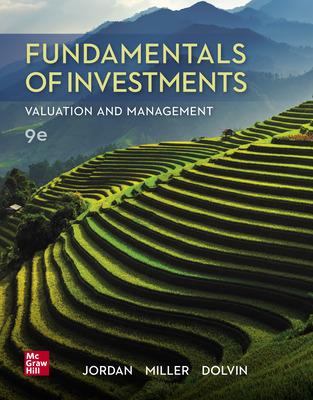
Question 1 The Big Bay Company plans to invest in equipment to produce a new product that is developed internally in its R\&D Department. There are two different systems to choose from. Annual sales of $10 million will be generated from deployment of either systems. - System X costs $2.1 million and has a three-year life span. Variable costs are 35% of sales, and fixed costs are $315,000 per year. - System Y costs $4.8 million and has a five-year life span. Variable costs are 30% of sales, and fixed costs are $355,000 per year. (2) Both systems are depreciated on a straight-line basis, with zero salvage value. The tax rate is 30%, and the discount rate is 15%. The company has spent a total of $250,000 on the research and development of this product in the past years. The financial controller, however, projects the economy over the project life span has a 25% chance of expansion and a 30% chance of recession. When the economy is in expansion, the annual sales revenueland variable costs of the proposed projects will be adjusted upwards by 12%. When the economy is in recession, the annual sales revenue and variable costs of the proposed projects will be adjusted downwards by 15%. The financial controller requires the expected values of the NPVs and EACs under various economic scenario to be computed for investment project evaluation and decision. Required a) Determine the relevant cash flows for the project. (6 marks) b) Both systems will not be replaced when they wear out. Compute the NPVs under each of the three scenarios and the expected NPV for project evaluation and selection. Which project should the firm choose? (12 marks) c) If both systems will be replaced when worn out, which project should the firm choose? Since the decisions of parts b and c are different, assess which method (NPV or EAC) is more appropriate as a selection criterion for capital project appraisal? d) If both systems will be replaced when worn out, advise the firm which project should be undertaken? Since the decisions of parts b and c are different, assess which project evaluation method is more appropriate as a selection criterion for capital project appraisal (provide the detailed calculation)? (5 marks) e) Compute the profitability index (PI), and assess what capital investment decision would you recommended? Comment on the rationale of using the PI index. (5 marks (Total 40 mark Question 1 The Big Bay Company plans to invest in equipment to produce a new product that is developed internally in its R\&D Department. There are two different systems to choose from. Annual sales of $10 million will be generated from deployment of either systems. - System X costs $2.1 million and has a three-year life span. Variable costs are 35% of sales, and fixed costs are $315,000 per year. - System Y costs $4.8 million and has a five-year life span. Variable costs are 30% of sales, and fixed costs are $355,000 per year. (2) Both systems are depreciated on a straight-line basis, with zero salvage value. The tax rate is 30%, and the discount rate is 15%. The company has spent a total of $250,000 on the research and development of this product in the past years. The financial controller, however, projects the economy over the project life span has a 25% chance of expansion and a 30% chance of recession. When the economy is in expansion, the annual sales revenueland variable costs of the proposed projects will be adjusted upwards by 12%. When the economy is in recession, the annual sales revenue and variable costs of the proposed projects will be adjusted downwards by 15%. The financial controller requires the expected values of the NPVs and EACs under various economic scenario to be computed for investment project evaluation and decision. Required a) Determine the relevant cash flows for the project. (6 marks) b) Both systems will not be replaced when they wear out. Compute the NPVs under each of the three scenarios and the expected NPV for project evaluation and selection. Which project should the firm choose? (12 marks) c) If both systems will be replaced when worn out, which project should the firm choose? Since the decisions of parts b and c are different, assess which method (NPV or EAC) is more appropriate as a selection criterion for capital project appraisal? d) If both systems will be replaced when worn out, advise the firm which project should be undertaken? Since the decisions of parts b and c are different, assess which project evaluation method is more appropriate as a selection criterion for capital project appraisal (provide the detailed calculation)? (5 marks) e) Compute the profitability index (PI), and assess what capital investment decision would you recommended? Comment on the rationale of using the PI index. (5 marks (Total 40 mark







